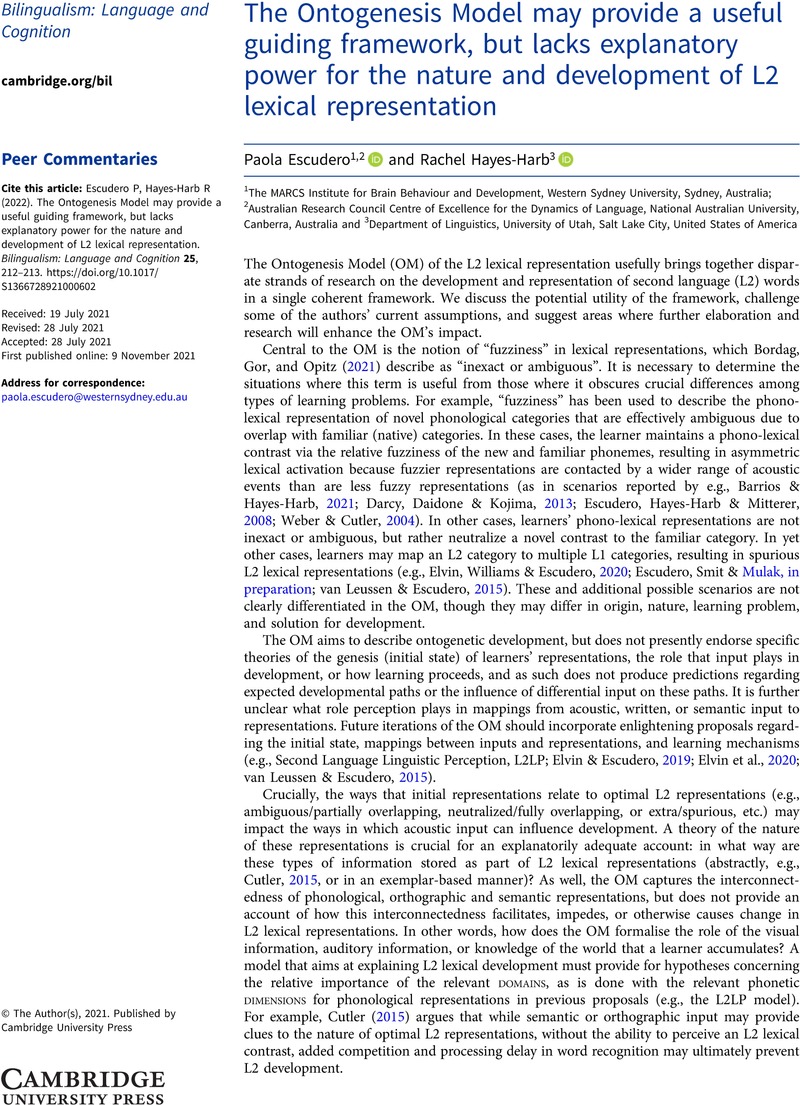Crossref Citations
This article has been cited by the following publications. This list is generated based on data provided by Crossref.
Smit, Eline A.
Milne, Andrew J.
and
Escudero, Paola
2022.
Music Perception Abilities and Ambiguous Word Learning: Is There Cross-Domain Transfer in Nonmusicians?.
Frontiers in Psychology,
Vol. 13,
Issue. ,
Bordag, Denisa
Gor, Kira
and
Opitz, Andreas
2022.
Refining key concepts of the Ontogenesis Model of the L2 lexical representation.
Bilingualism: Language and Cognition,
Vol. 25,
Issue. 2,
p.
236.
Escudero, Paola
Smit, Eline A.
and
Mulak, Karen E.
2022.
Explaining L2 Lexical Learning in Multiple Scenarios: Cross-Situational Word Learning in L1 Mandarin L2 English Speakers.
Brain Sciences,
Vol. 12,
Issue. 12,
p.
1618.






